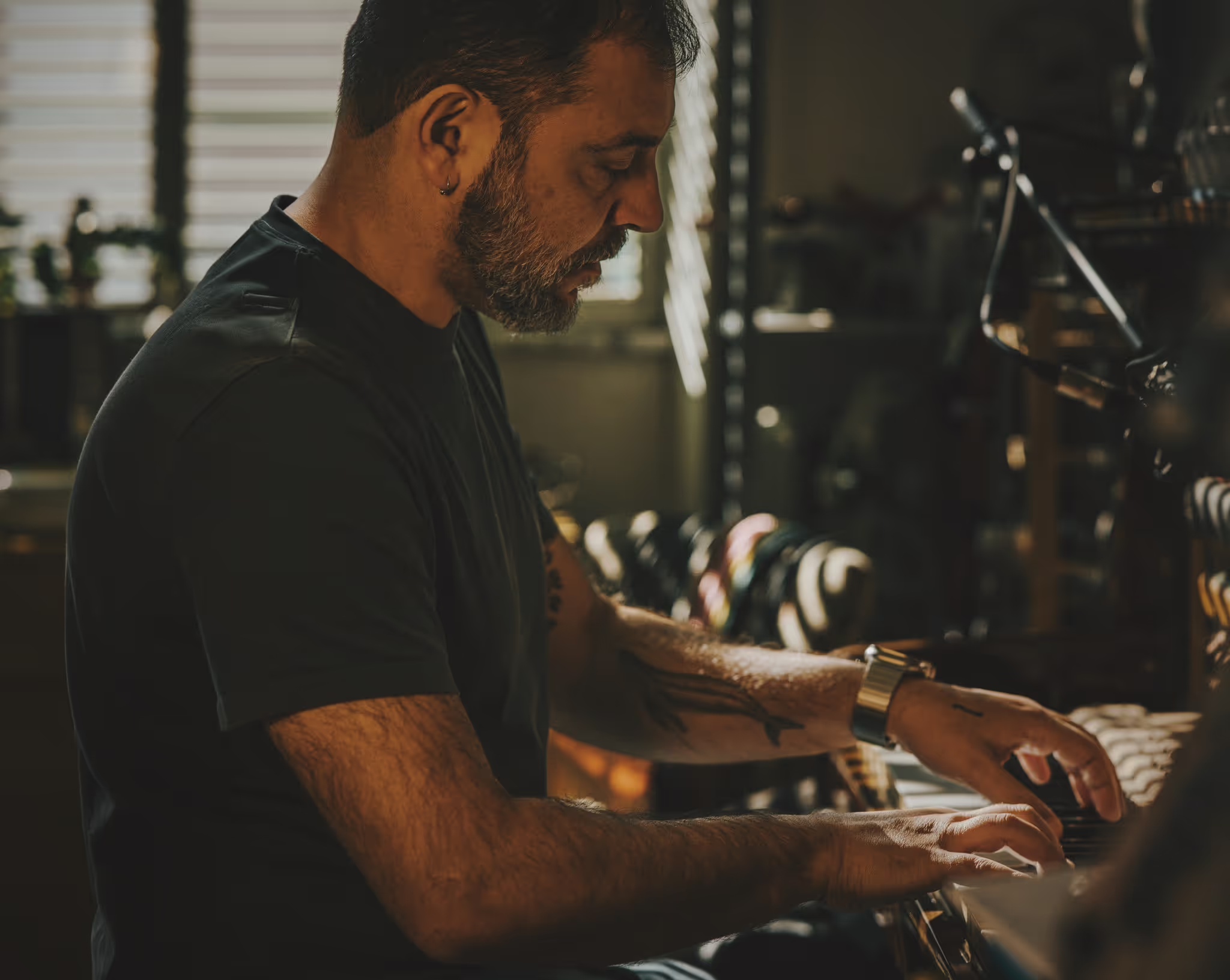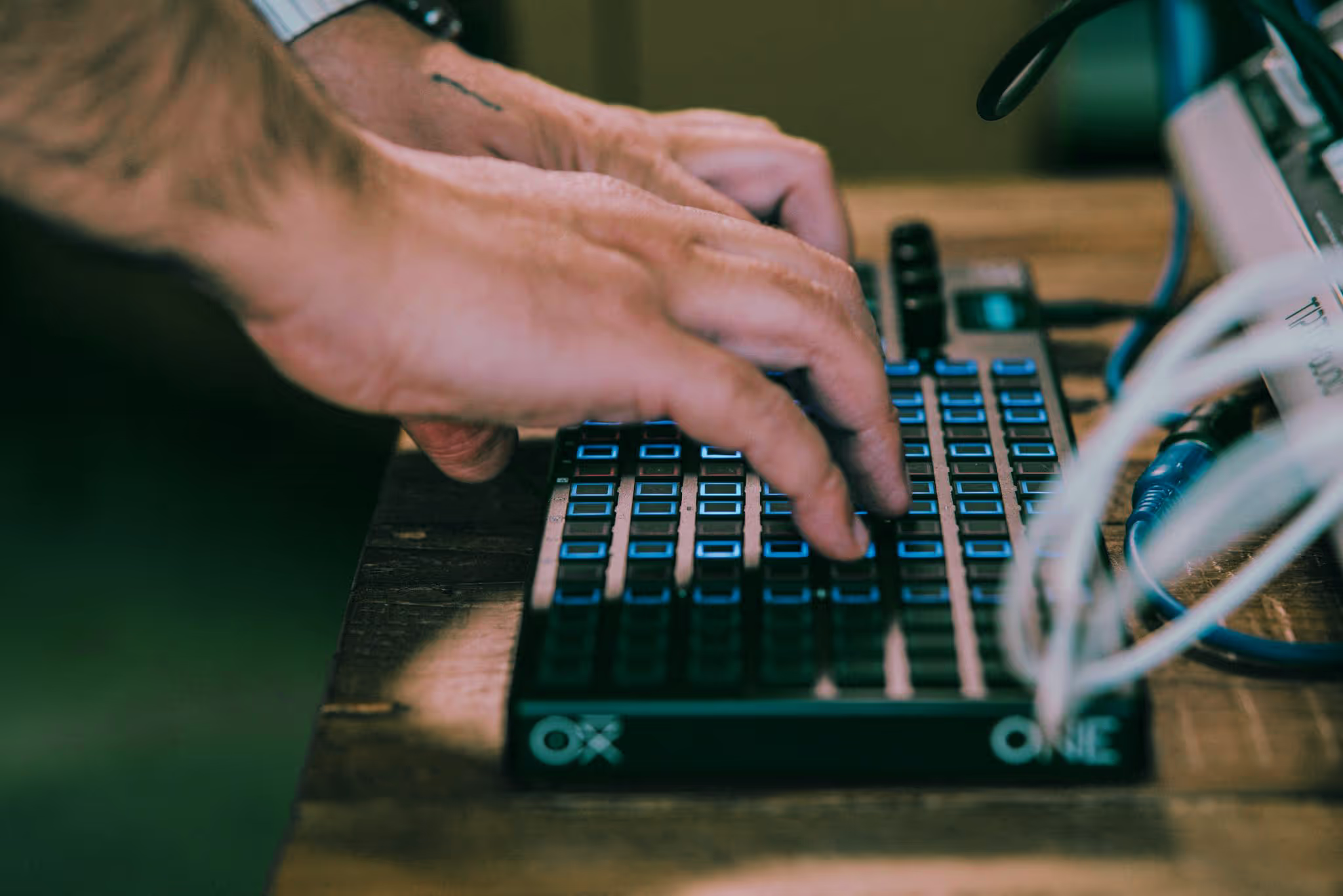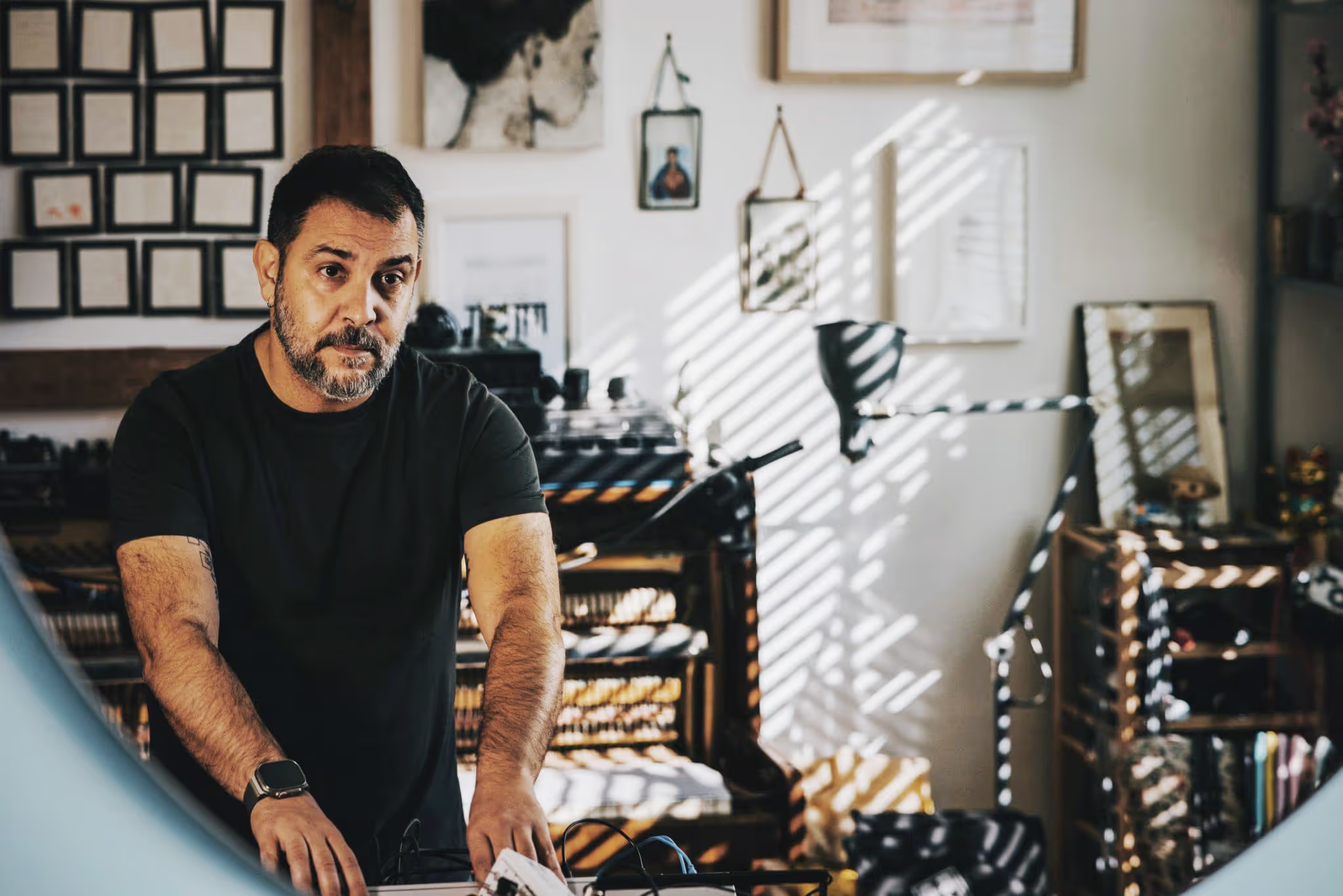
My journey with the piano began at the age of 4, on a Bontempi organ synth I received as a Christmas gift. I was fortunate to have parents who recognized my connection to music and did everything possible to support me on this path—a path I am still unsure whether I chose or whether it chose me. My dedication led me to formal training with a classical foundation, studying Piano, Composition, and Electronic Music at the Conservatorio San Pietro a Majella in Naples, and later earning a Bachelor of Music at the Manhattan School of Music in New York.
My love for electronic music emerged during my time as a rehearsal pianist for contemporary dancers at Teatro San Carlo in Naples. Collaborating with dancers and choreographers—who are truly at the core of contemporary creation—sparked a fascination with the interplay of movement, sound, and space, inspiring me to delve into electronic experimentation.
This passion deepened through my PhD in digital audio restoration at La Sapienza University in Rome, where I merged my classical training with cutting-edge technology. Electronic music became a way to expand the emotional and spatial dimensions of sound, which I now integrate into immersive installations and multimedia performances. This blend of tradition and innovation defines my artistic expression and continues to shape my work today.
For me, musical form is a balance between fullness and emptiness, between direction and stillness. It’s no coincidence that my inspiration often comes from architecture. When I compose, I aim to carefully balance every element of the piece, from the notes themselves to the sound design, creating a path that is well-defined and precise yet open to interpretation. Even in my solo piano compositions—often born from recorded improvisations and later transcribed—I leave room for a certain spark of freedom in performance. This allows me to modify the form during execution, keeping the music alive and responsive to the moment. It’s this interplay between them that gives my work its dynamic character.
My work is undoubtedly inspired by the emotional baggage of daily life, which allows me to channel emotions into my compositions. I am a keen observer, meaning I absorb things with more detail and depth, often picking up on nuances that others might overlook. This is particularly true in my discography and projects that are independent of multimedia elements.
When it comes to commissions, I always strive to bring my own voice to what I create. I believe it’s essential to ‘make your voice heard’ if you have something meaningful to say.

I consider myself a curious child at heart. I love discovering new things, reading manuals, revisiting ideas, and refining creative processes—or even finding entirely new ones. This curiosity has been a driving force behind my approach to creating and performing music, especially as technology continues to evolve. My journey into immersive installations began in 2013 when Massimiliano Siccardi invited me to compose the soundtrack for a short show to be staged in a truly unique space: a 7,000-square-meter bauxite quarry (Carrières de Lumières in Baux-de-Provence). Although it was a completely new experience for me at the time, it felt like home, as though I had been doing it my entire life. Perhaps it was my admiration for Bill Viola or the fact that both Massimiliano and I, along with other artists in our group, came from a theater background. These shared influences created a synergy that continues to thrive. That first experience laid the groundwork for years of collaboration and innovation, allowing us to create shows that have resonated with millions of people worldwide.
Since my first album released on vinyl in 2017, composing and performing have become inseparable for me. My compositional process is deeply tied to performance—I create and refine my music while playing. I love exploring in real time, pushing the boundaries of my setup, my technique, and my ideas, all while actively engaging with sound. It’s difficult to separate the two because, in my creative mindset, they are one and the same. Performing is not just a way to present music but an integral part of how I compose and bring my ideas to life.
I first learned about the OXI One two years ago at Superbooth in Berlin. Initially, it was their Coral module that caught my attention—a compact powerhouse of creativity. Intrigued, I struck up a conversation with the team at OXI Instruments, and that’s when I discovered the OXI One.
The features that immediately stood out to me with the OXI One were its BATTERY POWER, portability, and the variety of sequencers you can assign to each individual track. It’s incredibly versatile—you can do it all: manage precise step sequences, create generative patterns, control virtually any parameter you can think of, or shape schemes that constantly surprise you. Whether you’re making noise or crafting perfectly measured music, the OXI One adapts effortlessly to your creative needs.
I tend to favor small devices—tools that combine extreme portability with great versatility. Over the past year and a half, personal events have often kept me away from the physical space I call my ‘studio’. Having the ability to carry a ‘brain’ in my backpack, capable of managing and controlling ideas and drafts, has been essential. The OXI One fits perfectly into this philosophy. It seamlessly integrates with my setup, whether I’m working with a traditional piano or other gear. With my hands on the piano, a well-programmed sequence on the OXI controlling a synth allows me to ‘duet’ effortlessly, creating a fluid interaction between the acoustic and electronic elements of my music. If I had to choose one piece of equipment to bring to a desert island, the OXI One would undoubtedly make the list.
The OXI One is an incredibly comprehensive sequencer that offers a variety of creative possibilities and combinations, making it easy to bring ideas to life or explore entirely new directions. It feels like having 10 sequencers in one. The ability to seamlessly combine MIDI and CV makes it the command center of any setup. For example, the patch I created for the video accompanying this blog uses simple arpeggiators with a touch of randomness, controlling the 8 voices of the Tiptop Audio Art polyphonic oscillator via MIDI. If I slowed down this patch and routed one of the four tracks to a CV output modulating a Make Noise Morphagene loaded with a pre-recorded piano sample, the same sequence could evolve into a rich, varied, and complex ambient track. Everything is controlled by the OXI One, all at my fingertips, making it a truly transformative tool in how I approach sequencing and composing.
I’m a simple man, and perhaps showing my age a bit—but I would truly appreciate a small, practical feature: an LED indicator that shows whether the battery is charging or fully charged, even when the device is powered off. It’s a minor addition, but one that would make a world of difference for ease of use and peace of mind. That said, a wooden special edition with backlit warm white buttons would be an absolute gem—I’d buy it in a heartbeat.
And, of course, you’ll definitely owe me some credit for the idea!
To listen to Luca’s latest release Impermanenza click here
